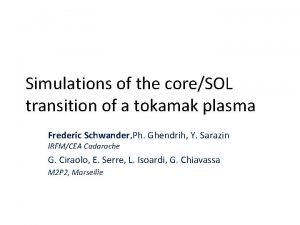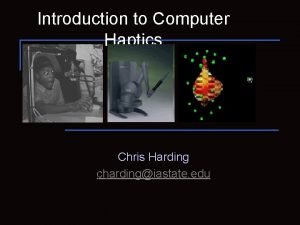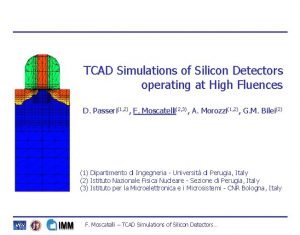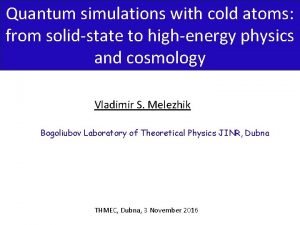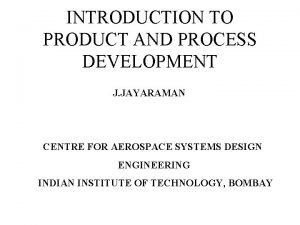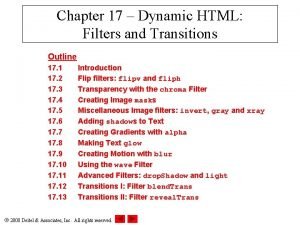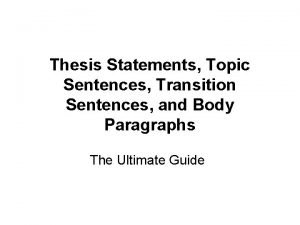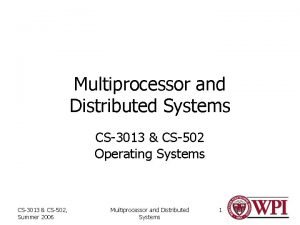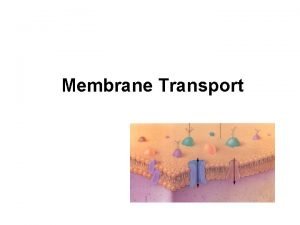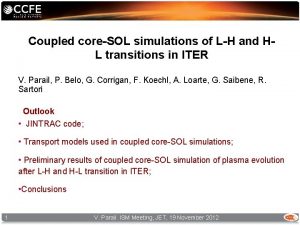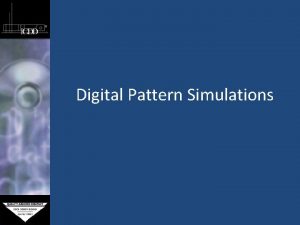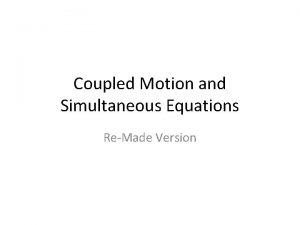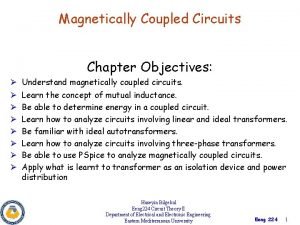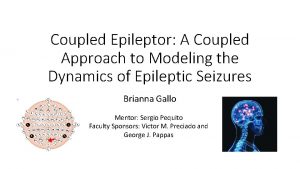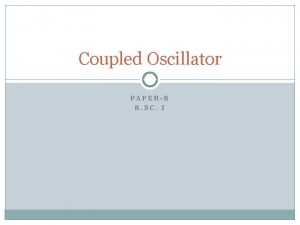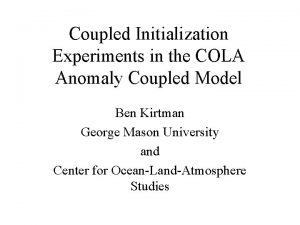Coupled coreSOL simulations of LH and HL transitions















- Slides: 15

Coupled core-SOL simulations of L-H and HL transitions in ITER V. Parail, P. Belo, G. Corrigan, F. Koechl, A. Loarte, G. Saibene, R. Sartori Outlook • JINTRAC code; • Transport models used in coupled core-SOL simulations; • Preliminary results of coupled core-SOL simulation of plasma evolution after L-H and H-L transition in ITER; • Conclusions 1 V. Parail ISM Meeting, JET, 19 November 2012

JINTRAC suite of codes 2 V. Parail ISM Meeting, JET, 19 November 2012

Transport models used by JINTRAC (4) • As we include SOL region into modelling domain, the following boundary conditions at the separatrix are used: • Core plasma receives from 2 D SOL code EDGE 2 D/EIRENE fluxaverage densities, temperatures and neutral flux at the separatrix; • On the other hand, 1 D core transport code JETTO passes heat and particle fluxes as well as all perpendicular transport coefficients to SOL code; 3 V. Parail ISM Meeting, JET, 19 November 2012

Transport models used by JINTRAC (2) Ø Whenever possible, we use GLF 23 model to predict evolution of Te, Ti n. D and n. T; Ø The problem is that GLF 23 model does not work near plasma edge and therefore can not be used when we simulate L-mode plasma; Ø It also fails when we try to model fast transients (dithering L-H transitions, discrete pellet injection, discrete ELMs); Ø All this means that in many cases (when plasma dynamics is of the essence) we ought to use an old empirical Bg. B model; Ø Having said that, we use a “retuned” Bg. B model, which includes an inward particle pinch and it also gives plasma performance in ITER close to those given by GLF 23 in the steady state H-mode; Ø As usually, we introduce edge transport barrier in H-mode, which has a fixed width (in line with P. Snyder prescription) and low level of residual anomalous transport between ELMs; 4 V. Parail ISM Meeting, JET, 19 November 2012

Transport model used by JINTRAC (3) Two models: “global” and “local" are used to describe L-H and H-L transition: 5 • In “global model” the code compares total heating power with the most recent parametric fit for L-H transition power threshold from Martin et al. J. Phys 2008 (including an atomic mass dependency): • In “local model” the code compares the heat flux through the separatrix with • Note, the fact that we use edge heat flux Q rather than total heating power to compare with the power threshold PL-H means that plasma can temporary return back to L-mode after L-H transition because the heat flux near the edge barrier is reduced by a very low level of heat and particle transport within the barrier following L-H transition; the recent heuristic model for L-H transition by W. Fundamenski et al. Nucl. Fusion 52 (2012) 062003: V. Parail ISM Meeting, JET, 19 November 2012

Transport model used by JINTRAC (4) After comparing the heating power P or the heat flux Q with the power threshold PLH transport within the edge barrier is modified in 3 possible ways: ü Plasma stays in L-mode if Q< PLH; ü Plasma enters H-mode with type-III ELMs if PLH<Q< g*PLH, 1. 5>g>1; üTransport within edge barrier is reduced to almost neo-classical level between ELMs (some residual anomalous transport in electron heat conductivity is assumed); üType-III ELMs are similar to type-I ELMs (with Gaussian increase in edge transport coefficients) but with lower value of critical pressure gradient acr -III<1; ü Plasma enters H-mode with type-I ELMs if Q> g*PLH with type-I ELMs having higher value of critical pressure gradient acr-I~1. 8 6 V. Parail ISM Meeting, JET, 19 November 2012

Transport model used by JINTRAC (5) • Transport model in the SOL plasma comprises longitudinal transport, adapted from original Braginskij approximation and perpendicular transport, extended to the SOL from the core (core = within ETB in H-mode); • Outgoing heat and particle fluxes propagate through the SOL in accordance with the chosen models for parallel and perpendicular transport and eventually reach target plates and walls; • We can choose wall and target plate recycling as appropriate; • We also introduce an ad hoc level of cold neutrals influx, which originates at the wall (position of influx is changeable). The propagation of cold neutrals through the SOL and main plasma and their interaction with plasma is controlled by EIRENE; • Neutrals are pumped out by the cryopump in accordance with ITER specification; • Core plasma fuelling is also supplied by NBI (but this source is very weak: SNB~2 e 20 p/sec) and by shallow pellet injection (with variable source: generally Spellet>2 e 22 p/sec); • EDGE 2 D/EIRENE also deals with plasma-wall interaction and release of intrinsic and extrinsic impurities; 7 V. Parail ISM Meeting, JET, 19 November 2012

L-H and H-L transition in ITER: COCONUT results (1) • 15 MA/5. 3 T reference Inductive Burn Scenario was selected for our simulations; • We start simulations at t=85 s (after the end of current ramp up phase) assuming that plasma is in L-mode and increase heating power at t=85. 75 s; • We use “global” model for L-H transition in this particular simulation and plasma jumps straight to H-mode at t=85. 75 s 8 V. Parail ISM Meeting, JET, 19 November 2012

L-H and H-L transition in ITER: COCONUT results (2) D at the separatrix L-H transition H-L transition Heat flux on inner target 9 V. Parail ISM Meeting, JET, 19 November 2012

L-H and H-L transition in ITER: COCONUT results (3) Ionisation source inside separatrix ELMs Volume-average electron density 10 V. Parail ISM Meeting, JET, 19 November 2012

L-H and H-L transition in ITER: COCONUT results (4) Electron temperature at the separatrix Electron temperature at inner target Risk of target damage Risk of detachment 11 V. Parail ISM Meeting, JET, 19 November 2012

L-H and H-L transition in ITER: COCONUT results (5) Volume-average electron density Observe fast (but short lived) density rise after L-H transition and inability to increase core density in ELMy H-mode via gas fuelling Thermal ion core energy content 12 V. Parail ISM Meeting, JET, 19 November 2012

L-H and H-L transition in ITER: COCONUT results (6) Density inner target Density separatrix 13 D separatrix El. power inner target V. Parail ISM Meeting, JET, 19 November 2012 • Local model for L -H transition (black) leads to a dithering transition (or type-III ELMs)? • Dithering transition simplifies potential problem with plasma detachment but dramatically reduces density increase after L-H transition

L-H and H-L transition in ITER: COCONUT results (7) El. Power separatrix Density separatrix 14 Av. density core Te inner target V. Parail ISM Meeting, JET, 19 November 2012

Summary • • Large number of important phenomena, which originate on the interface between core and SOL (L-H and H-L transition, plasma fuelling, impurity penetration to plasma core, ELMs and methods of its mitigation and others), can only be effectively simulated using coupling between core and SOL transport codes; JINTRAC is, in my view, the best available option and we start to use it for ITER modelling; To make our simulations fully trustworthy, it is important to establish a close connection (and benchmarking) between JINTRAC team and ITER-based SOLPS users; At least three important ingredients should be added to our present approach: – Proper description of at least extrinsic impurities (Ne, Ar? ) and possibly heavy intrinsic impurity like W; – Plasma detachment should be tried and benchmarked against SOLPS results; – Improvement in our description of L-H and H-L transition is needed. • 15 Testing of our approach on existing experimental data is vitally important. V. Parail ISM Meeting, JET, 19 November 2012
 Coresol
Coresol Don't gamble with physical properties for simulations
Don't gamble with physical properties for simulations Clinical simulations in nursing education
Clinical simulations in nursing education Chris harding simulations
Chris harding simulations Tcad simulations
Tcad simulations World history simulations
World history simulations Simulations for solid state physics
Simulations for solid state physics Www.irs.gov/app/understanding taxes/student/simulations.jsp
Www.irs.gov/app/understanding taxes/student/simulations.jsp Ippd key tenets
Ippd key tenets Baton simulations
Baton simulations Claim.of fact
Claim.of fact Vertical blinds
Vertical blinds Transition statement example
Transition statement example A paragraph has unity when
A paragraph has unity when Tightly coupled multiprocessor
Tightly coupled multiprocessor Refractory period
Refractory period
